10 Things You Need To Know About Driving A Motorhome In Australia
Embarking on a motorhome adventure across Australia is an exciting way to explore the country’s diverse landscapes and unique attractions. However, driving a motorhome requires some preparation and awareness to ensure a smooth and enjoyable journey. Here are ten essential things you need to know before hitting the road in your motorhome in Australia!
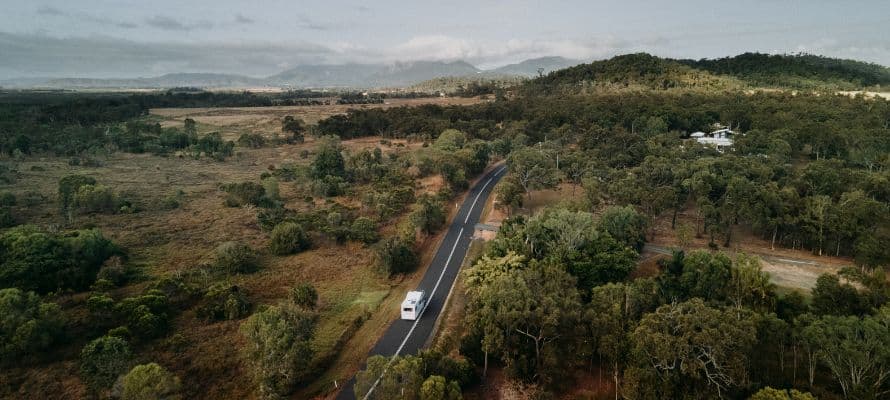
1. LICENSING AND LEGAL REQUIREMENTS
Before you head out, ensure you have the right driver’s license. In Australia, a standard car license (Class C) is typically adequate for driving most motorhomes. Since all the motorhomes at Cruisin’ RV Sales weigh under 4,500kg GMV, a regular car license will be sufficient.
If your license is in a language other than English, make sure you always carry a copy of your international licence with an accredited English translation.
2. AUSTRALIAN ROAD RULES
It’s also important to familiarise yourself with Australian road rules. Key regulations include driving on the left side of the road, obeying speed limits (which are strictly enforced and may vary by state and territory), and using seat belts. All passengers in the rear need to be secured while the vehicle is moving. The passengers must not use the bathroom or laying down in the bed while driving.
Here is a list of important rules to follow:
- Drive on the left-side of the road
- Everyone in the vehicle must wear seatbelts
- Respect the speed limits
- Don’t drink drive: it is illegal to drive with a Blood Alcohol Concentration over 0.05%. For learners, provisional drivers, and commercial drivers, the limit is often lower or zero
- Give way to vehicles on your right
- Overtake to the right
- Don’t use your smartphone while driving
- Park on the left side of the road, never facing oncoming traffic
- Roundabouts are taken in a clockwise Vehicles in the roundabout have the right of way
- Overnight parking for motorhomes may be restricted or prohibited in some places. Always check local regulations and signage to avoid fines or towing
Some roads and bridges in Australia require toll payments. Check if your route includes any toll roads and have a method to pay, such as an electronic tag or pass.
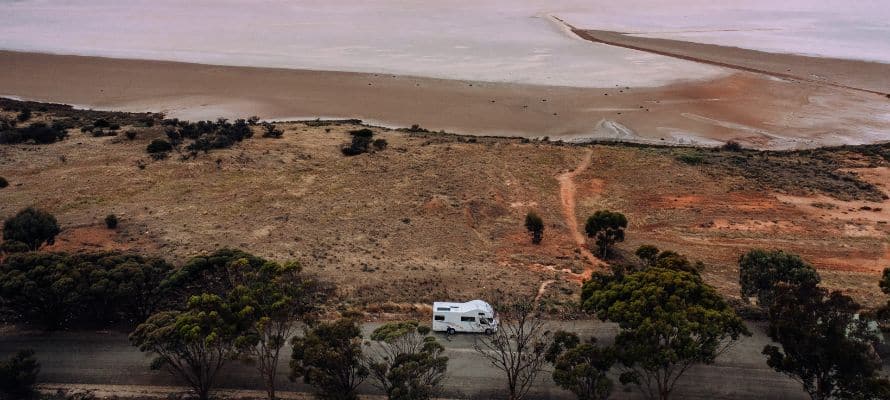
3. GET TO KNOW YOUR MOTORHOME
Understanding your vehicle’s dimensions is crucial, particularly for height, width, and turning radius. Please refer to our FAQs for more information about our different motorhomes. Remember that some motorhomes are higher and usually do NOT fit a standard car park and undercover carparks.
If you’re new to driving a motorhome, spend some time practicing in less congested areas. Get familiar with how the vehicle handles, including turning, braking, and reversing. Consider taking a driving course specific to motorhomes for added confidence.
Learn how to use the features of your motorhome and how things work:
- Learn how to use the water pump, check water levels, and handle the wastewater tanks
- Know how to refill the freshwater tank and empty the grey and black water tanks
- Understand how to operate the refrigerator, stove, microwave, and other features
- Understand the vehicle’s power system, including how to operate the solar panels, inverter, and battery systems
It will make your journey much easier and stress-free.
4. WILDLIFE AND HAZARDS
Australia’s wildlife can be unpredictable and occasionally hazardous. Kangaroos, wombats, and other animals can unexpectedly cross the road, especially during dawn and dusk. Drive cautiously and be especially vigilant in areas where wildlife crossings are common.
In tropical and subtropical regions, mosquitoes can be particularly aggressive and may carry diseases like Ross River virus. Use insect repellent, wear protective clothing, and avoid outdoor activities during peak mosquito activity times.
In rural areas, especially in the northern and central regions of Australia, you might encounter livestock such as cattle and sheep crossing roads. Farmers often let their animals roam freely or move them between pastures. Be prepared to stop if you see livestock on or near the road and adhere to any warning signs.
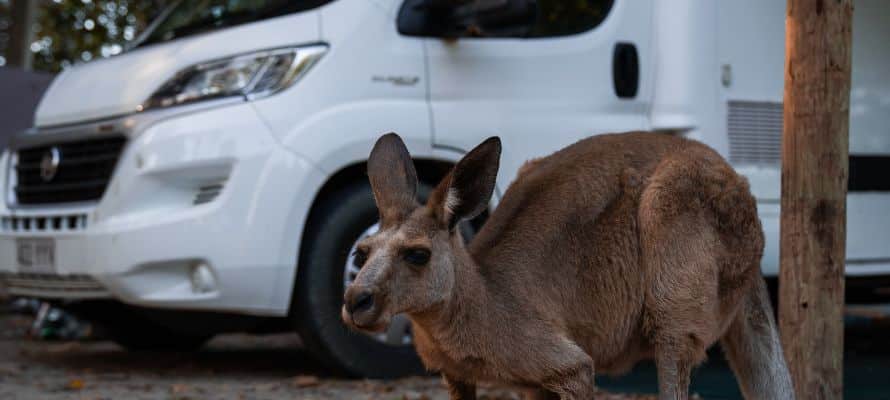
5. WEATHER
Australia’s climate can vary drastically, and extreme weather conditions can pose significant hazards such as:
- Heatwaves: Temperatures in Australia can soar, especially in the summer months (December to February). Overheating can affect both you and your vehicle. Ensure your motorhome’s cooling system is in good working order, stay hydrated, and avoid driving during the hottest parts of the day.
- Flooding: Heavy rains can lead to rapid flooding, particularly in low-lying or rural areas. Always check weather forecasts and road conditions before setting off. Avoid driving through floodwaters, as they can be deceptively deep and powerful.
- Cyclones and Storms: Tropical regions can experience cyclones and severe storms, which may bring strong winds and heavy rains. Be aware of weather warnings and adjust your travel plans accordingly.
6. TERRAIN
Australia’s road network includes smooth highways, rough gravel tracks, and remote outback paths. Be prepared for variable conditions. When traveling on unsealed roads, reduce your speed and increase your following distance to account for potential hazards and dust.
Dust clouds can reduce visibility, and loose gravel can affect your vehicle’s traction. Reduce your speed and keep a safe distance from other vehicles to avoid creating dust clouds that might obscure visibility.
Unsealed roads can have potholes and corrugations (ripples in the road surface) that can jolt your vehicle. Slow down when driving over these surfaces to prevent damage to your motorhome and ensure a smoother ride, or stay on sealed roads.
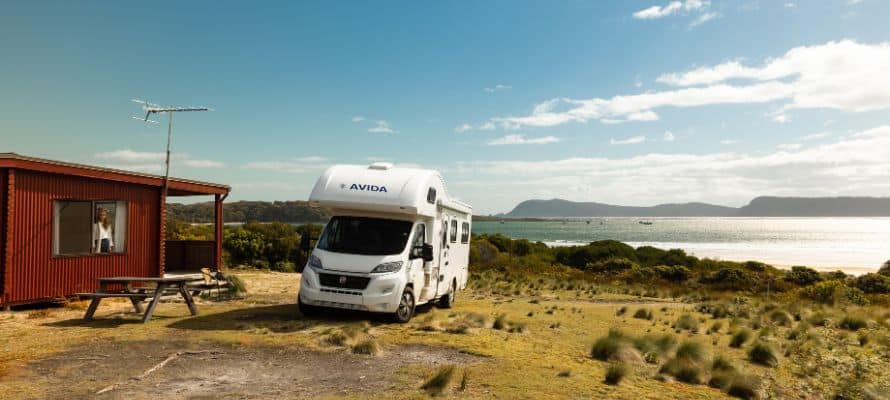
7. FUEL AND EFFICIENCY
With long stretches of road, varying terrain, and fluctuating fuel prices, managing your fuel usage effectively is crucial for a smooth and economical trip.
Plan your route and identify the locations of fuel stations along the way. In remote areas, fuel stations, repair shops, and medical facilities may be few and far between. Always plan your fuel stops carefully, carry spare parts if possible, and have a well-stocked first aid kit.
Driving at moderate speeds is generally more fuel-efficient. On highways, driving at speeds higher than 100 km/h (60 mph) can significantly increase fuel consumption.
8. PARK AND CAMPSITE
Australia offers a diverse range of parks and campsites, from lush national parks to coastal caravan parks and everything in between. However, motorhomes are not allowed to park anywhere. Look for designated campgrounds or motorhome parks.
Many national parks have designated campgrounds with basic amenities like toilets and picnic tables. Some may require permits or bookings, especially during peak seasons.
Free or low-cost campsites are available throughout Australia, particularly in rural and outback regions. You can download the app Camper Mate, which is great for finding nearby caravan park and is free. Be sure to check local regulations and respect the environment.
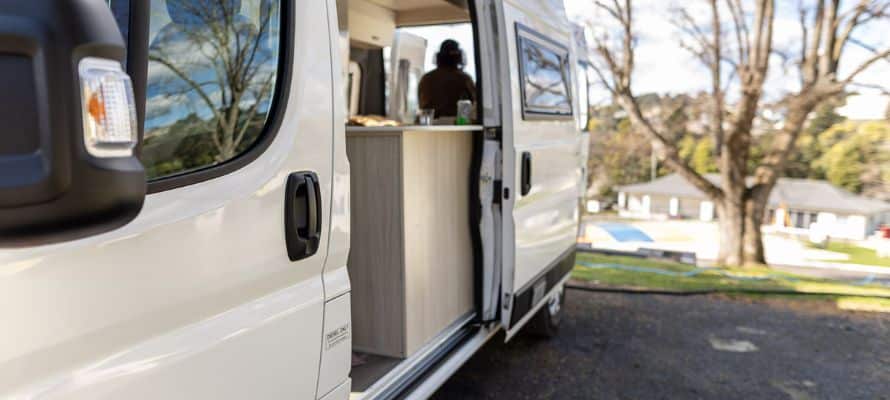
9. ROADSIDE ASSISTANCE AND INSURANCE
Having a plan for roadside assistance and insurance can make all the difference if you encounter a breakdown, accident, or other problems during your trip.
Consider joining a roadside assistance organisation such as the Australian Automobile Association (AAA) or a similar service. Membership often includes benefits like towing, battery jump-starts, flat tyre changes, and lockout services.
Adequate insurance coverage is fundamental for protecting yourself and your motorhome from financial loss due to accidents, theft, or other incidents. Having a comprehensive coverage would cover a wide range of scenarios, including accidental damage, theft, fire, and third-party liability.
In addition to motorhome insurance, consider purchasing travel insurance. Travel insurance can cover a range of issues including trip cancellations, medical emergencies, and personal liability. Ensure your travel insurance covers you for the duration of your trip and includes activities you plan to undertake.
10. VEHICLE MAINTENANCE AND SAFETY
Maintaining and ensuring the safety of your motorhome is essential for a smooth and enjoyable journey across the country. Regular maintenance helps prevent breakdowns and accidents, while safety practices protect you and your passengers. This includes regular inspections of the engine, tyres, brakes, and other critical components.
Equip your motorhome with a comprehensive emergency kit. This should include a first aid kit, fire extinguisher, flashlight, multi-tool, emergency blanket, and non-perishable food and water. All the vehicles at Cruisin’ RV Sales are equipped with smoke alarms, fire extinguisher, and seatbelts.
While travelling, it’s important to conduct routine checks to ensure everything remains in good condition.
- Make periodic stops during long drives to inspect your motorhome (check tyre pressure, fluid and oil levels… etc).
- Pay attention to any changes in your motorhome’s performance or unusual sounds.
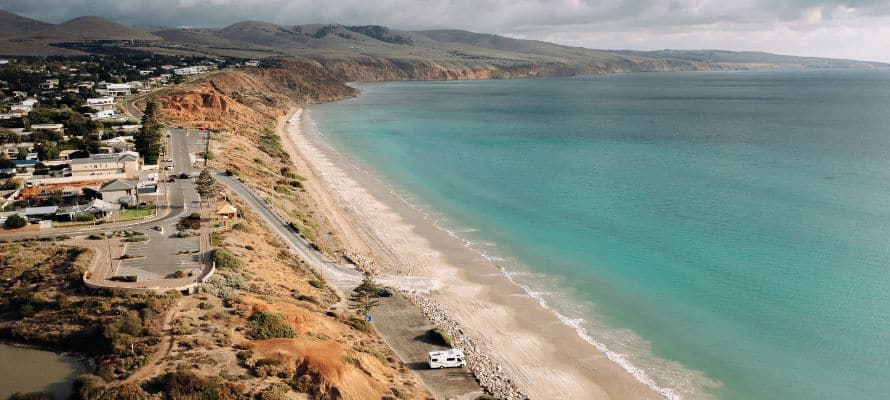
Embarking on a motorhome adventure across Australia is an incredible way to experience the country’s vast landscapes, vibrant cities, and stunning natural beauty. As you travel, remember to plan your routes carefully, stay vigilant for wildlife, and respect local customs and environmental guidelines. Embrace the freedom of the open road and take the time to enjoy the diverse experiences that Australia has to offer!
Related articles:
Ready to plan your next adventure? Explore our range of ex-rental motorhomes for sale! If you don’t see the type of vehicle you’re interested in, go ahead and submit an inquiry form or give us a ring at 1300 124 329.
Did you purchase a motorhome from us? We’d love to hear about your adventures! Share your journey with #cruisinrvsales! Happy and safe travels!
*The deals and offers mentioned in this article might be withdrawn at any point. Please contact our sales team to learn about current offers.
